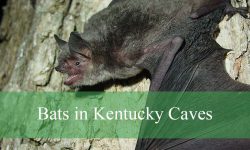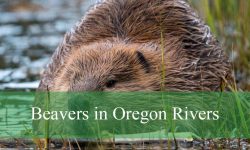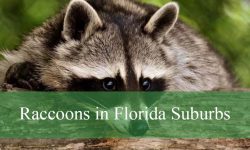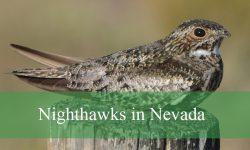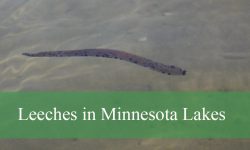Deer are among the most familiar wild animals in Arkansas. They appear in forests, farmland edges, backyards, and roadside clearings at dawn and dusk. Many people see them regularly yet know surprisingly little about the hidden lives these animals lead across the state’s diverse landscapes.
Arkansas has one of the healthiest white tailed deer populations in the South. The combination of mild climate, mixed forests, fertile river valleys, and vast rural lands provides habitat that deer have adapted to with precision. Their behavior is fine tuned to seasonal changes, food availability, and predator pressures.
This article uncovers the secrets about Arkansas deer that most residents have never heard. From their communication to their feeding strategies, migrations, and adaptations, deer in the Natural State reveal far more complexity than expected.
Understanding Deer in Arkansas
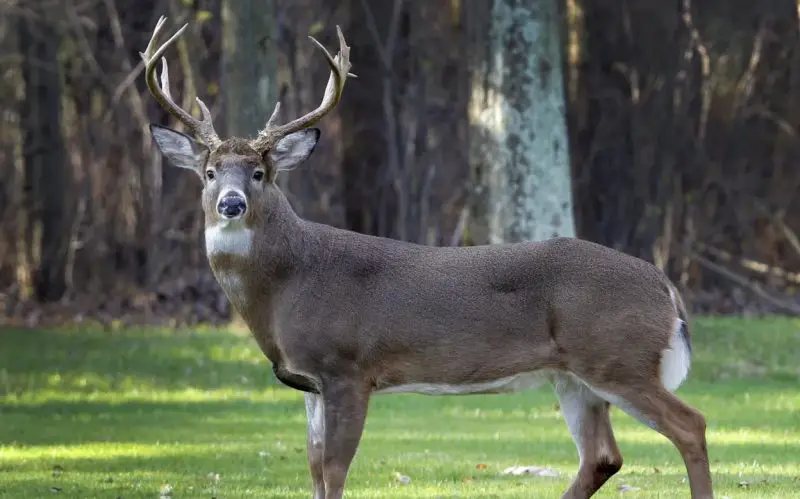
What Arkansas Deer Really Are
Arkansas is home to the white tailed deer, Odocoileus virginianus. They are agile mammals with strong senses, powerful legs, and remarkable survival instincts. Bucks grow antlers each year which they shed and regrow. Does raise fawns under dense cover during summer.
White tailed deer thrive in Arkansas because the environment provides year round food and shelter. They occupy hardwood forests, pine stands, river bottoms, agricultural fields, and suburban edges.
How Deer Populations Recovered in Arkansas
In the early 1900s, overhunting and habitat loss reduced deer numbers significantly. Restoration projects, regulations, and controlled management helped populations rebound. Today Arkansas supports hundreds of thousands of deer spread across every region.
Their population success demonstrates the adaptability of the species and the effectiveness of long term wildlife management.
Where Deer Live Across the State
Deer thrive in the Ozarks, the Ouachitas, the Delta, and the Gulf Coastal Plain. Each region offers unique conditions. Mountain areas provide rugged terrain and oak forests. Delta lands offer fertile fields and wetlands. Pine forests provide winter cover and browse.
Deer adapt to each region using strategies learned over generations.
Hidden Behaviors You Never Knew
Deer Are More Vocal Than People Realize
Deer communicate through grunts, bleats, snorts, and wheezes. Bucks grunt during the rut to signal dominance. Does bleat to call fawns. Alarm snorts alert nearby deer of danger.
These sounds create a complex communication network that helps deer coordinate movement.
Scent Is Their Primary Language
Deer use scent glands to communicate territory, reproductive readiness, and identity. Glands on their legs, forehead, and tail release chemical signals that help deer interpret their environment.
This scent based communication is a major reason deer respond to changes in weather, predators, and breeding cycles.
They Travel More Than You Think
During the rut, bucks roam miles each night searching for receptive does. GPS tracking studies in Arkansas show that some bucks cover two to four miles in a single evening. Does also travel widely but tend to remain closer to their home ranges.
Movement increases dramatically during fall and early winter.
Deer Adaptations in Arkansas
Acute Hearing and Smell
Deer rotate their ears independently which helps them pinpoint sound direction. Their sense of smell can detect predators, food, and humans at great distances.
These sensory abilities help them survive in landscapes where predators and human activity overlap.
Speed and Agility
White tailed deer can sprint at speeds up to 35 miles per hour. Their powerful legs allow them to leap fences and fallen logs. Agility is crucial in Arkansas’s mixed forest environments where obstacles are common.
Camouflaged Coat
Their brown and tan fur helps them blend into surroundings. Seasonal coat changes allow deer to stay hidden year round. Fawns have white spots that mimic dappled sunlight on forest floors.
Feeding Habits of Arkansas Deer
Seasonal Diet Shifts
Deer eat based on availability. In spring they graze on fresh vegetation, clover, and tender shoots. Summer offers fruits, grasses, and agricultural crops. Fall provides acorns, persimmons, and nuts. Winter diets include woody browse.
Arkansas forests are rich in hard mast species which play a major role in deer nutrition.
Preference for Acorns
Acorns are a primary food source in fall. White oak acorns are preferred because they are lower in tannins and easier to digest. Red oak acorns last through winter and help deer survive cold months.
Acorn abundance influences deer body condition heading into the rut.
Crop Feeding in Farmland Regions
In the Delta and agricultural zones, deer feed on soybeans, corn, rice edges, and winter wheat. These high energy foods contribute to strong antler growth and body weight.
Farmers often see deer tracks around field edges at sunrise.
The Secret Rut Behavior of Arkansas Deer
Rut Timing
The rut occurs in late fall and early winter. Bucks become more active, roam widely, and become less cautious. Does enter estrus for only about 24 hours. This short window creates intense competition.
Buck Competition
Bucks spar with antlers to establish dominance. These fights range from light pushing to intense battles. Winning bucks gain access to receptive does.
Doe Behavior
Does signal readiness with scent and behavior. They may travel to meet bucks or remain in sheltered areas depending on habitat conditions.
The rut is the busiest and most visible season for deer activity.
Fawn Rearing and Family Life
Fawn Birth
Most fawns in Arkansas are born between May and June. Mothers hide newborn fawns in tall grass or dense brush. Fawns remain motionless to avoid predators.
Their spotted coat provides camouflage.
Maternal Behavior
Does return periodically to nurse their fawns. They feed quickly and leave to avoid attracting predators. After several weeks, fawns begin following their mothers more regularly.
Growth and Independence
By late summer, fawns eat solid food. Spots fade by early fall. Many remain with their mothers through winter before dispersing in spring.
Deer Movement and Seasonal Patterns in Arkansas
Summer Patterns
Deer stay close to water sources. Shade and thick vegetation provide relief from heat. Feeding occurs mostly at dawn and dusk.
Fall Movement
This is the peak movement season. Rutting, food abundance, and population pressures increase deer travel.
Winter Behavior
Deer reduce movement to conserve energy. They rely heavily on browse and leftover mast.
Spring Activity
Green vegetation brings deer into open meadows and edges where new growth is abundant.
Deer and Arkansas Forest Ecosystems
Tree Regeneration
Deer browsing affects tree regeneration. Young saplings of oak, hickory, and maple are frequently eaten. This shapes forest composition.
Seed Dispersal
Deer distribute seeds through digestion and movement. Plants that rely on deer include berries, herbs, and shrubs.
Predator Relationships
Coyotes, bobcats, and black bears prey on fawns. Deer activity helps support these predators. The predator prey relationship influences population balance.
Human Deer Interactions in Arkansas
Suburban Deer
Neighborhoods with gardens, ornamental plants, and cover attract deer. Many homeowners see deer eating shrubs, flowers, and fruit trees.
Vehicle Collisions
Deer collisions increase in fall when movement peaks. Roads near woods, fields, and river bottoms are high risk.
Backyard Habitat
Some residents enjoy seeing deer and create wildlife friendly yards. Others use fencing or repellents to reduce browsing.
Myths and Misconceptions About Arkansas Deer
Myth: Deer Are Harmless
While deer avoid confrontation, bucks can be aggressive during the rut. Does may defend fawns against dogs or threats.
Myth: Deer Are Overpopulated Everywhere
Population levels vary by region. Some areas maintain healthy levels while others require management.
Myth: Deer Only Eat Plants
Deer are primarily herbivores but occasionally eat small insects or mushrooms.
The Shocking Secrets of Deer Antlers
Antler Growth Rate
Bucks grow antlers at astonishing speeds. During peak growth antlers may grow a quarter inch per day. Growth depends on nutrition and genetics.
Velvet Shedding
Velvet is shed in late summer. Bucks rub antlers against trees to remove it. These rubbing behaviors leave visible signs on vegetation.
Antler Drop
Bucks shed antlers every winter. This timing varies by individual but often occurs between December and March.
Deer in Arkansas Wetlands and River Valleys
Feeding in Floodplains
River valleys offer abundant vegetation. Deer browse willow shoots, aquatic plants, and succulent herbs near water edges.
Seasonal Flooding
Floods push deer to higher ground. After waters recede vegetation growth attracts deer back to lowlands.
Predator Activity
Wetlands support predators like coyotes and bobcats. Deer movements reflect seasonal predator densities.
Environmental Challenges Facing Arkansas Deer
Habitat Loss
Urban expansion and land clearing reduce habitat diversity. Loss of forests affects food availability.
Disease
Chronic wasting disease poses a growing threat. Monitoring programs track spread and implement management practices.
Climate Variability
Changes in rainfall and temperature influence mast production which affects deer nutrition.
How Arkansas Manages Deer Populations
Regulated Hunting
Controlled hunting maintains balanced populations. It prevents overbrowsing, reduces vehicle collisions, and supports conservation funding.
Habitat Programs
Wildlife agencies restore forest edges, plant native vegetation, and protect riparian habitats.
Disease Monitoring
Continuous testing ensures early detection of chronic wasting disease.
Daily Life of Deer in Arkansas
Morning Routine
Deer feed heavily at dawn then retreat to bedding areas. They choose thick cover where they remain hidden through the day.
Midday Rest
Deer remain mostly inactive during midday heat.
Evening Movement
Deer resume feeding before nightfall. This pattern shifts slightly during seasons when food becomes scarce.
FAQs About Deer in Arkansas
Are deer dangerous
They avoid people but may defend themselves when threatened.
What do deer eat
They eat vegetation, acorns, crops, leaves, and browse.
When are deer most active
They are active at dawn and dusk.
Why do deer cross roads at night
They move frequently at night during the rut.
Do deer migrate
They do not migrate but expand ranges seasonally.
When do deer shed antlers
They shed antlers in late winter.
Why do fawns hide
Hiding helps them avoid predators during early life.
Are deer populations stable in Arkansas
Most regions maintain healthy populations.
What predators do deer have
Coyotes, bobcats, and bears prey mainly on fawns.
Do deer damage crops
In some regions deer feed on crops and cause economic impact.
Conclusion
Deer in Arkansas represent one of the most adaptable and ecologically significant animals in the state. Their behaviors reflect centuries of evolution shaped by forests, rivers, wetlands, and human activity. Understanding their habits reveals how deeply they influence ecosystems, agriculture, and wildlife patterns across the Natural State.
These animals are far more than passing shadows along roadsides. They are ecological engineers that support plant communities, feed predators, and enrich habitat diversity. Recognizing their hidden secrets fosters appreciation for the delicate balance that keeps Arkansas’s landscapes thriving.

